Sunburn sneaks up on you. One minute you’re fine, the next the shower stings and your skin feels like a hotplate. You want fast relief that actually helps tonight-and won’t make things worse tomorrow. This guide cuts to what works, what doesn’t, and how to keep the damage from snowballing. It leans on dermatology guidance and real-life tricks you can do with pantry items and a quick chemist run. Living in Brisbane, where UV can hit extreme even on cooler days, I keep these moves ready year-round.
- TL;DR: Get out of the sun. Cool the skin (not ice) for 10-20 minutes. Pat dry and moisturize with plain aloe or a fragrance-free lotion. Take an anti-inflammatory if it’s safe for you. Drink water. Repeat cool compresses through the evening.
- Skip: ice directly on skin, vinegar, butter/oils on a fresh burn, benzocaine/lidocaine sprays, petroleum jelly on day one, hot showers.
- Signs to get help now: widespread blistering, facial swelling, confusion, severe pain, fever/chills, vomiting, dehydration, eye pain, any burn on an infant.
- Expect mild sunburn to settle in 3-5 days; moderate burns may take a week. Peeling usually starts day 3-4.
- Best home kit: aloe gel (plain), hydrocortisone 1% cream, calamine, NSAIDs/acetaminophen, soft cotton clothing, oral rehydration sachets.
Fast Relief Now: Step-by-Step First Aid for Sunburn
Think of sunburn as a heat injury plus inflammation. Treat both. Here’s a simple sequence that fits the first hour home.
- Get out of the sun and into shade or indoors. Keep the room cool with a fan or air-con. Loose, soft cotton is your friend.
- Cool the skin. Run cool-to-lukewarm water over the burn or take a gentle bath for 10-20 minutes. No ice. Ice can worsen injury and trap heat under a tight vasoconstriction response (the American Academy of Dermatology warns against it).
- Pat-don’t rub-dry. While skin is slightly damp, moisturize. Use a plain, alcohol-free aloe vera gel or a lightweight, fragrance-free lotion with glycerin or hyaluronic acid. Store it in the fridge; cooler is kinder.
- Layer relief if needed. For prickly itch, a thin film of 1% hydrocortisone cream can help on intact skin for a day or two (not on the face or broken skin unless your doctor says so). Calamine lotion soothes too.
- Take an anti-inflammatory if you can use them safely. Ibuprofen or naproxen reduce pain and swelling. If those aren’t for you, acetaminophen handles pain (not inflammation). Never give aspirin to kids or teens because of Reye’s syndrome risk.
- Hydrate. Sunburn pulls fluid into the skin. Aim for steady sips until your urine looks like pale lemonade. If you feel washed-out or nauseated, use oral rehydration salts.
- Keep cooling cycles going. Use a cold compress for 10 minutes on, 10 minutes off, as often as you like. Wet a clean cloth with cold water, wring it out, and re-cool it in a bowl of chilled water. No direct ice against skin.
- Baby the skin. Avoid tight straps, rough seams, backpacks, and hot showers. No scrubs, retinoids, vitamin C, or exfoliating acids for a few days.
What I do after a scorcher: a 15-minute cool shower, then two layers-first aloe gel, then a light moisturizer 10 minutes later. I rotate cold compresses on my shoulders while I sip water and pop an ibuprofen. I sleep under a sheet with a fan, in the loosest tee I own. It’s boring, but I wake up less sore and patchy.
Quick decision guide:
- Just red, sore, no blisters? Home care above.
- Blisters in small areas? Don’t pop them. Cover with a sterile, nonstick pad if they rub. Keep cooling and moisturizing around them.
- Blisters covering a large area, face or genitals involved, fever, or you feel awful? That’s not a DIY job-seek medical care today.
Why this works: cooling slows the inflammatory cascade; moisturizers trap water and support the skin barrier; anti-inflammatories tame pain and swelling. This matches guidance from the American Academy of Dermatology and the Australasian College of Dermatologists.
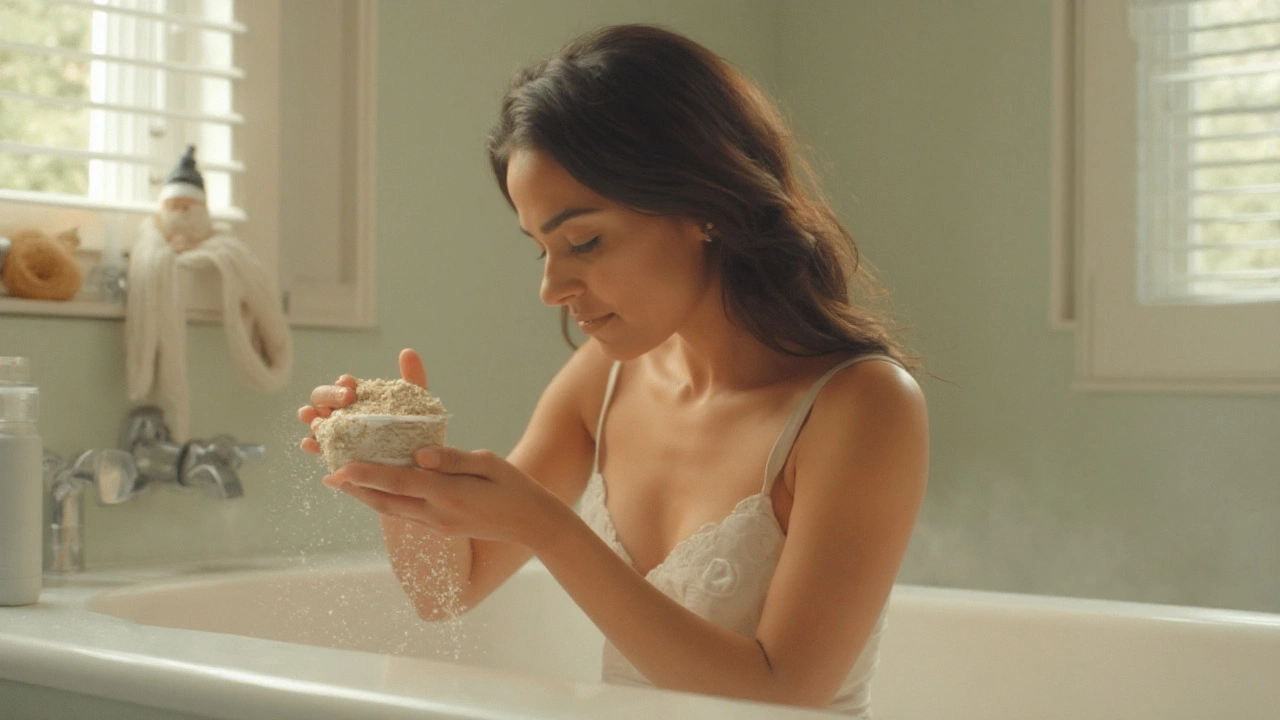
Proven Home Remedies (and What to Skip)
If you’ll try just one thing, make it this: pair cooling with a simple moisturizer. Add other remedies if you need extra comfort. Here’s the short list that actually earns its place on your counter.
Aloe vera gel (plain, alcohol-free). Look for 100% gel without green dyes or heavy fragrance. Keep it in the fridge, and apply a thin layer every few hours. Evidence for serious burns is mixed, but for superficial sunburn, dermatology groups call it soothing and safe. If you cut a leaf, scrape the clear gel, rinse off the yellow sap (that part can irritate), and patch-test first.
Cold compresses. This one is underrated. Wet a clean, soft cloth with chilled water and lay it on the burn for 10 minutes. Repeat as often as you like. Add a teaspoon of baking soda to a liter of cold water if the sting is intense-it’s not magic, but it can calm surface acidity.
Colloidal oatmeal bath. Add 1 cup of colloidal oatmeal to a tub of cool-lukewarm water, swish to dissolve, and soak 10-15 minutes. It reduces itch by forming a soothing film. This is a staple in eczema and mild burn care and has decent clinical support for itch relief.
Milk compress. Whole milk’s proteins and fat can feel soothing. Soak a clean cloth in cold milk, apply for 10 minutes, then rinse the skin with cool water and moisturize. Use fresh milk only.
Hydrocortisone 1% cream (OTC). For itchy, inflamed patches (not open blisters), a thin layer twice daily for 1-2 days can help. Don’t combine with harsh actives. Avoid around eyes and lips unless a clinician okays it.
Calamine lotion or soy-based moisturizers. Both cool on contact and reduce itch. Calamine can be drying, so moisturize after.
Oral antihistamines for itch. A non-drowsy daytime option (like cetirizine). A drowsy one (like diphenhydramine) can help you sleep-use caution if you need to be alert.
Honey (medical-grade, not pantry squeeze bottles). A very light smear can help tiny, superficial areas if you’re out of other options. It’s sticky and best for pinpoint spots, not whole shoulders. Don’t use on large open blisters at home.
Water-first hydration. A quick rule: if you’ve peed once in 6-8 hours and it’s dark, you’re behind. Sip 250-300 ml every 20-30 minutes for a few hours after a big exposure. Add an electrolyte sachet if you feel off.
What to skip (and why):
- Ice on bare skin. It can worsen tissue injury.
- Vinegar, essential oils, toothpaste, butter, coconut oil on day one. These can irritate, trap heat, or mess with the skin barrier.
- Benzocaine/lidocaine “numbing” sprays. The FDA has warned about allergic reactions and a rare blood disorder (methemoglobinemia), and they can irritate burns.
- Alcohol-based gels. They sting and dry you out.
- Petroleum jelly early on. It can trap heat on a fresh burn. Use it later in healing if the skin is no longer hot and you need to lock in moisture.
How often to moisturize? Early on, little and often wins. If the skin drinks it and still looks shiny-tight, reapply. If it looks greasy or stings, back off and swap products.
Does diet help? There’s no “sunburn cure” smoothie. But staying hydrated and eating something salty plus fruit can steady you after hours on the beach. Lycopene-rich foods (tomatoes, watermelon) help with photoprotection when eaten regularly, but that’s prevention, not a fix.
| Remedy | How to use | Evidence/Guideline | Avoid if |
|---|---|---|---|
| Aloe vera gel (plain) | Thin layer on intact skin every few hours; refrigerate gel | Dermatology guidelines support for comfort; mixed but favorable for mild burns | Allergic to aloe; avoid dyed/fragranced, alcohol-heavy gels |
| Cold compress | Cool wet cloth 10 min on, 10 off, repeat | Standard first aid; reduces heat and inflammation | Open wounds requiring sterile dressings |
| Oatmeal bath | 1 cup colloidal oatmeal in cool bath, soak 10-15 min | Good evidence for itch relief in inflamed skin | Oat allergy (rare) |
| Milk compress | Cold whole milk cloth 10 min, rinse, moisturize | Traditional; limited evidence but safe and soothing | Milk protein allergy |
| Hydrocortisone 1% cream | Thin layer twice daily on intact skin 1-2 days | AAD supports short-term use for itch/inflammation | Broken skin; face/eyelids unless advised |
| Calamine lotion | Light coat to itchy areas; moisturize after | Long-standing symptomatic relief | Very dry skin without follow-up moisturizer |
| NSAIDs (e.g., ibuprofen) | Use per label, with food and water | Reduces pain and swelling | Ulcer, kidney issues, blood thinners-ask your doctor |
| Oral antihistamines | Non-drowsy by day; drowsy at night for sleep | Helps itch perception and rest | Operating machinery; interactions with other meds |
| Petroleum jelly | Use later to lock moisture once heat subsides | Barrier support in later stages | Very fresh hot burns (traps heat) |
A quick word on claims: a 2023 review on topical aloe for burns found benefit mainly in superficial burns, with safety high when the product is simple. AAD and the Australasian College of Dermatologists recommend cool water, moisturizers, and avoiding ice and topical anesthetics. FDA safety communications caution against benzocaine sprays on irritated skin. That’s the backbone of this shortlist.
Reality check on timelines: redness often peaks 12-24 hours after exposure, then eases. Peeling shows up around day 3-4. You can’t “reverse” that, but you can soften it and stop it from becoming itchy, cracked chaos. Moisturize after every cool rinse. If a patch starts to crack, add a thicker, bland ointment at night once the area no longer feels hot.
Live in Australia? The sun here means business. Use SPF 50+ broad-spectrum when you’re back outside, wear a brimmed hat, and check the UV index on your weather app-it’s the UV that burns you, not the temperature. On a UV 11 day in Brisbane, unprotected skin can redden in minutes.
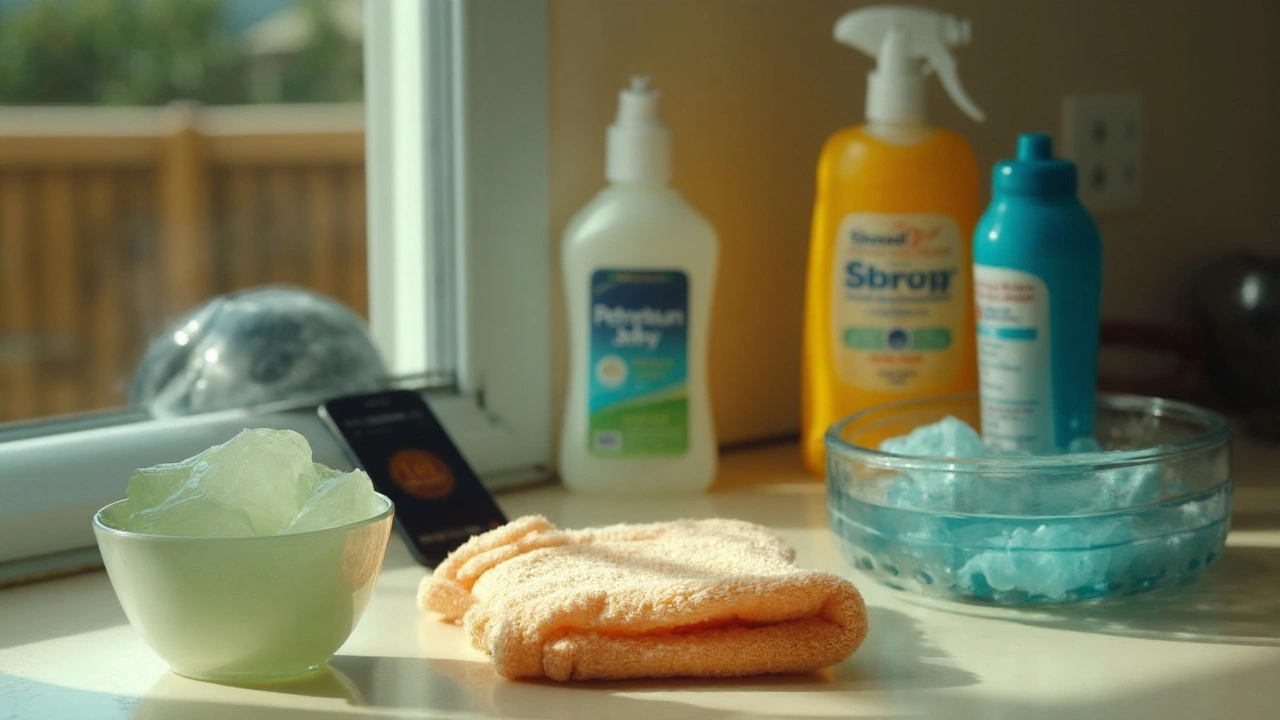
FAQ, Checklists, and Next Steps
Here’s where most people get stuck: sleeping, peeling, kids, and when to quit DIY and see a pro. Keep this section handy.
Home kit checklist (throw it in a beach bag):
- Plain aloe vera gel (alcohol-free) and a lightweight, fragrance-free lotion
- 1% hydrocortisone cream (for short-term itch on intact skin)
- Calamine lotion
- Ibuprofen/naproxen or acetaminophen (what’s safe for you)
- Oral antihistamine (daytime non-drowsy, nighttime drowsy)
- Colloidal oatmeal sachets
- Nonstick sterile pads and paper tape for blisters
- Oral rehydration salts
- SPF 50+ broad-spectrum sunscreen, SPF lip balm, and a UPF shirt
Mini-FAQ
- How long does a sunburn last? Mild: 3-5 days. Moderate with light blistering: 5-7+ days. Skin may peel around days 3-5. If your symptoms are getting worse after day 2, check in with a clinician.
- Can I use coconut oil? Not on day one. Oils trap heat. Once the skin is no longer hot and tenderness fades, a thin layer at night can seal moisture if a regular lotion isn’t cutting it.
- Is aloe better than hydrocortisone? Different jobs. Aloe cools and hydrates. Hydrocortisone calms inflammation and itch. Use hydrocortisone briefly on intact, very itchy areas. Don’t layer a dozen products-keep it simple.
- Should I pop blisters? No. A blister is a sterile dressing your body made. If one breaks, rinse with cool water, pat dry, and cover with a nonstick pad. Watch for signs of infection: increasing redness, warmth, pus, streaks, or fever.
- When can I go back in the sun? When tenderness and redness have settled. Until then, cover up. Sunscreen can sting on a fresh burn-use clothing and shade. If you must use sunscreen on healing skin, try a zinc oxide/titanium dioxide formula and patch-test.
- Hot or cold shower? Cool to lukewarm. Hot water spikes pain and inflammation.
- What about vinegar, tea, or yogurt? Vinegar and yogurt can irritate. Cool tea compresses are mild at best. If you try tea, use cool, weak black tea on a small patch and moisturize after.
- Can kids use these remedies? Yes, with care. Stick to cool water, aloe, light moisturizers, and loose clothing. Use weight-based dosing for pain relief as per the label. Avoid benzocaine sprays. Any infant with sunburn should be seen by a clinician.
- Does sunburn affect darker skin tones? Yes. Redness may be less visible; look for warmth, pain, and later, darker patches. To lower post-inflammatory hyperpigmentation, avoid friction, moisturize daily, and use sunscreen once the area tolerates it.
- Can I swim with a sunburn? Give it 48-72 hours. Chlorine and salt can sting and dry the skin. If you go, rinse with fresh water immediately and moisturize.
Sleep without the sting
- Pre-bed cool shower, then aloe plus a light moisturizer 10 minutes later.
- Fan or air-con on low; cotton sheets; loose tee. If a shoulder is very tender, fold a soft towel as a buffer under the sheet.
- If itch ruins your night, a drowsy antihistamine can help you sleep-use only if it’s safe for you.
Peeling and aftercare
- Don’t pull flakes. Trim loose edges with clean scissors. Moisturize morning and night.
- When the heat is gone, a thicker ointment can help corners (like shoulders) that crack.
- Hold off on exfoliating until the skin looks and feels normal for a week.
When to see a doctor (don’t wait):
- Large-area blistering or blisters on the face, hands, feet, or genitals
- Severe pain not controlled with OTC meds, vomiting, confusion, fainting
- Fever or chills within 24 hours of the burn
- Signs of infection in blisters: increasing redness, warmth, pus, red streaks
- Any sunburn in an infant or in someone with significant medical conditions
Next steps by situation
Parents of small kids. Focus on cooling baths (10 minutes), gentle pat dry, a pea-sized amount of aloe on intact skin, and loose cotton pajamas. Use weight-based acetaminophen or ibuprofen per the label for pain. Call your GP if there’s blistering or your child seems off.
Outdoor worker or athlete. Cool rinse the minute you can. Keep a small kit in the ute: aloe gel, nonstick pads, electrolyte sachets. If you must be back out tomorrow, wear UPF long sleeves, a neck gaiter, and tape a hydrogel pad under any strap that rubs.
Beachgoer with fair skin. Set alarms to reapply SPF 50+ every two hours and after swimming. Bring a cool box with a damp washcloth in a zip bag for instant compresses. Pitch a shade tent. Queensland beaches are gorgeous, but the UV doesn’t negotiate.
Brown or Black skin. Sunburn can be subtle in color but still painful. Prioritize the feel: heat, tenderness, and itch. Protect healing areas from sun to reduce dark spots. Once healed, a niacinamide serum can help even tone-skip it during the acute burn.
Face-only sunburn. Be gentler. Skip hydrocortisone unless your clinician okays it. Use cool compresses, bland moisturizer, and a mineral sunscreen when you step out again. Avoid actives for at least a week.
Eyes sunburnt (photokeratitis). That’s urgent. If you have severe light sensitivity, gritty pain, tearing after a bright day on the water or snow, seek care right away. Wraparound sunnies next time; the reflection off water in Moreton Bay can be brutal.
Prevention so you don’t need this guide again
- Check the UV index each morning. If it’s 3 or higher, sunscreen goes on.
- SPF 50+ broad-spectrum, a shot-glass amount for your body, half a teaspoon for face/neck, reapply every two hours and after swimming/sweating.
- Sun-protective clothing (UPF), a broad-brim hat, and wraparound sunglasses.
- Seek shade between 10 a.m. and 3 p.m.-in summer here, make that 9 to 4.
If you’re skimming for the key phrase to search later, this whole piece is your one-stop guide to sunburn home remedies. Bookmark it before your next beach day.
A note on credibility: the American Academy of Dermatology and the Australasian College of Dermatologists recommend cool water, bland moisturizers, cautious short-term hydrocortisone on intact skin, and avoiding ice and topical anesthetics. The FDA has issued safety communications on benzocaine products, especially on irritated skin. Reviews of aloe vera for burns show modest benefits and high safety for superficial burns. These are the lanes we’re staying in.
Last tip. Your skin heals better when you do the simple things early and consistently. Start cooling the moment you step inside, moisturize while damp, and hydrate. You’ll feel better tonight, and you’ll look a lot less like a peeled tomato tomorrow.

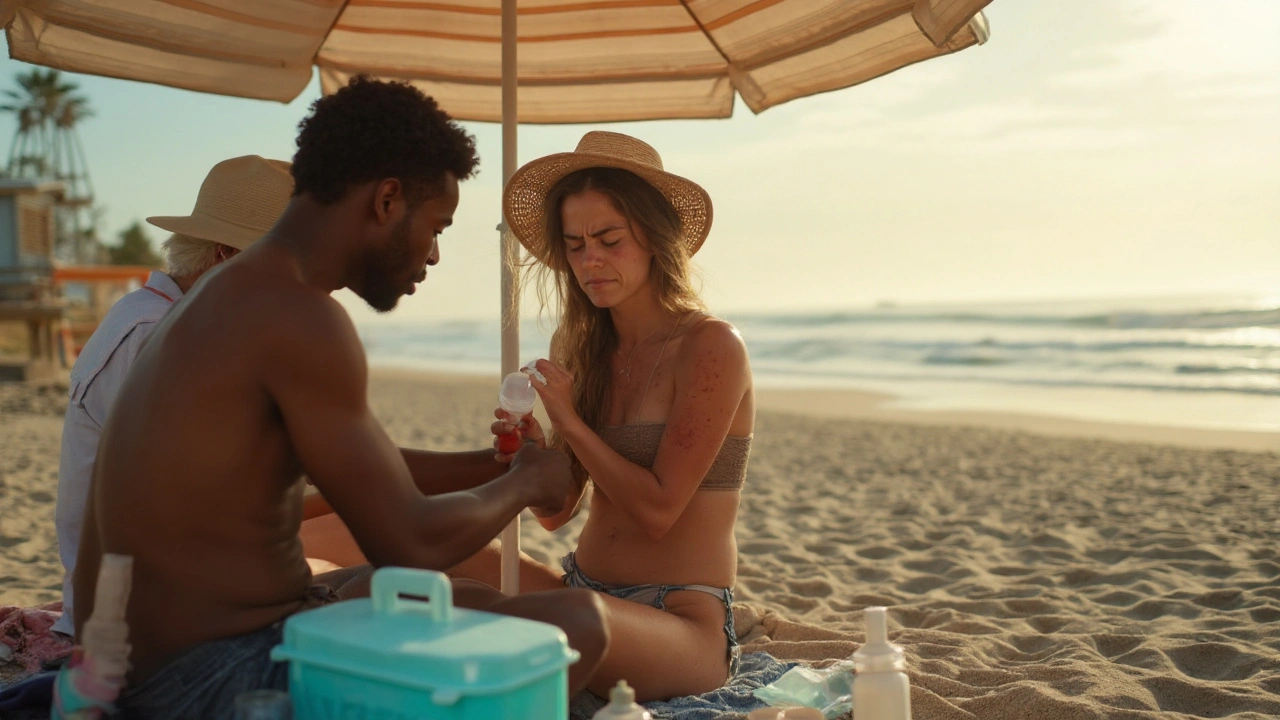
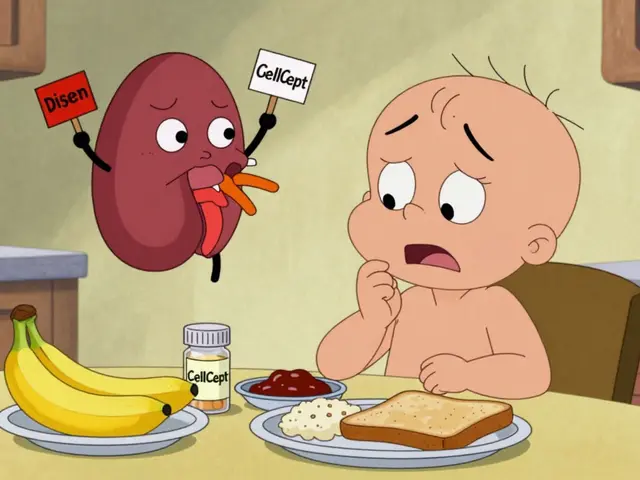
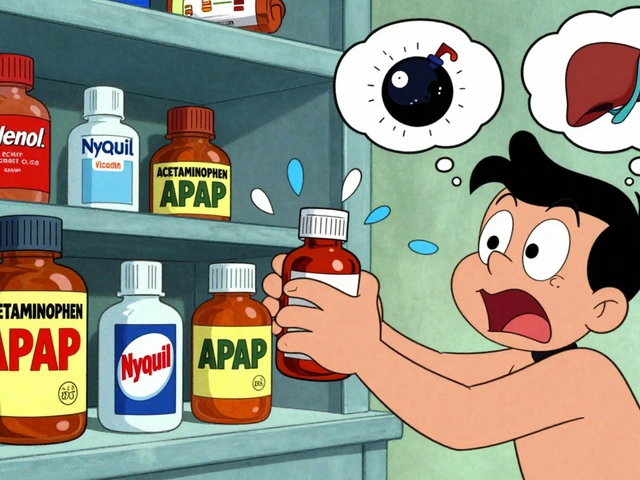
Kyle Tampier
August 31, 2025 AT 06:08Why is no one talking about the government’s hidden agenda to make us reliant on aloe vera? They’ve been suppressing the real cure-quantum healing crystals-for decades. You think this guide is about sunburn? Nah. It’s a distraction. Check the FDA’s 2023 memo buried in Appendix D. They don’t want you to know ice is safe if you use it right. I’ve seen the documents.
Tom Caruana
August 31, 2025 AT 21:42OMG I JUST GOT SUNBURNED AND I USED VINEGAR 😭😭😭 NOW MY SKIN IS ON FIRE AND I THINK I’M DYING 😭😭😭 WHY DIDN’T ANYONE TELL ME?? I’M SO STUPID I EVEN PUT COCONUT OIL ON IT AND NOW I’M A WALKING TOMATO 🍅🍅🍅 I NEED A THERAPIST AND A NEW LIFE
Muzzafar Magray
September 2, 2025 AT 07:33You people are wasting time with aloe and cold compresses. Real healing comes from discipline. You went out in the sun without a hat because you were lazy. No remedy fixes laziness. The sun doesn’t care about your skin. It’s a test. You failed. Go home, sit in the dark, and think about your choices.
Renee Williamson
September 2, 2025 AT 20:14Okay but like… I tried the milk compress and my dog licked it off and now he’s got a rash and he’s whimpering and I’m crying and I think my neighbor saw me through the window and now she thinks I’m a weirdo?? I just wanted my sunburn to stop!! Why is life like this??
Manish Mehta
September 3, 2025 AT 06:42Simple stuff works. Cool water, aloe, rest. No need for drama. I’ve had burns for years in India. Sun is strong. Just take care. No fancy tricks needed.
Okechukwu Uchechukwu
September 3, 2025 AT 12:32Let’s be honest: sunburn is just nature’s way of telling you you’re not living in alignment with your higher self. You were chasing dopamine on the beach, ignoring your inner stillness. The pain? It’s your soul screaming for presence. Aloe vera won’t fix that. Only mindfulness will. But hey, at least you’re not on TikTok right now. Progress.
Sarah Cline
September 5, 2025 AT 08:41Y’all are overcomplicating this. I just do the cool shower + aloe + water routine and I’m fine. It’s not magic, it’s just basic self-care. You don’t need a 2000-word guide-you need to stop being scared of your skin. You’re not broken. You just got too much sun. Breathe. You got this.
Sierra Thompson
September 5, 2025 AT 16:31There’s a philosophical irony here: we treat sunburn as an emergency to be fixed, yet we ignore the systemic neglect of our relationship with nature. We wear SPF 50 like armor, but we still walk into the sun like it owes us something. The burn isn’t punishment-it’s a dialogue. And we’re not listening. We’re just applying gels and hoping for silence.
Khaled El-Sawaf
September 6, 2025 AT 15:52While the advice provided is clinically sound, the author’s reliance on anecdotal personal routines-such as "two layers of moisturizer"-undermines the scientific rigor expected in medical guidance. The omission of peer-reviewed meta-analyses on topical aloe vera efficacy, coupled with the uncritical endorsement of colloidal oatmeal without dosage parameters, suggests a concerning lack of methodological discipline. This is not a guide-it is a curated opinion piece masquerading as evidence-based medicine.
Nawal Albakri
September 7, 2025 AT 07:29Wait so you’re telling me the government doesn’t want us to use ice? And they’re letting big pharma sell hydrocortisone like it’s a miracle? I’ve been reading about the 2024 WHO secret memo-sunburn is a cover-up for climate control experiments. They want us weak. That’s why they push aloe-it’s cheap, it’s easy to control, and it makes us think we’re doing something while they keep the real cure locked away. I’ve got the PDF. Want it? I’ll DM you. Don’t trust the dermatologists. They’re paid.